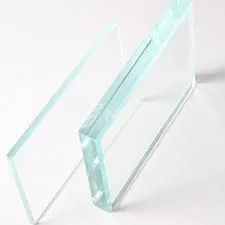Understanding the Price Dynamics of Tempered Window Glass
In today's construction and architectural industries, tempered window glass has become a crucial material, widely acclaimed for its safety, durability, and aesthetic appeal. As the demand for this type of glass has steadily increased, so too have the fluctuations in its pricing. Understanding the factors that influence the price of tempered window glass is essential for contractors, architects, and consumers alike, as well as for industries that heavily rely on this versatile product.
What is Tempered Window Glass?
Before delving into pricing, it's important to understand what tempered window glass is. Tempered glass is produced through a process of extreme heating and rapid cooling, which increases its strength compared to normal glass. This makes it resistant to thermal stress and impact, thereby enhancing safety, especially in environments prone to breakage. In construction, tempered glass is often used in facades, skylights, shower doors, and other installations where safety and durability are critical.
Factors Influencing the Price of Tempered Window Glass
1. Raw Materials The primary raw material for tempered glass is silica sand, along with soda ash and limestone. Variations in the prices of these raw materials, often influenced by global market trends or local supply issues, can significantly impact the price of tempered window glass. For example, fluctuations in oil prices can affect transportation costs, thus influencing the overall cost of raw materials.
2. Manufacturing Process The production of tempered window glass involves sophisticated technology and machinery, which can be capital-intensive. The costs involved in maintaining and upgrading these manufacturing facilities can lead to price changes. Additionally, the energy costs associated with the high temperatures required in the tempering process can greatly influence production costs.
3. Supply and Demand Like any product, the basic economic principles of supply and demand play a significant role in determining the price of tempered window glass. In periods of high construction activity, demand for tempered glass rises, leading to higher prices. Conversely, during economic downturns or in times of reduced construction, prices may drop as suppliers attempt to move inventory.
tempered window glass price
4. Geographical Factors The availability of tempered glass can vary by region. Areas with a high concentration of construction activity may experience higher prices due to increased demand. Conversely, regions with less demand may see lower prices. Additionally, logistics and shipping costs can vary significantly depending on the distance from production facilities.
5. Regulatory Factors Standards and regulations surrounding building materials can also impact prices. For instance, regions with stricter safety and energy efficiency requirements may necessitate the use of higher-quality tempered glass, which can be more expensive. Compliance with safety standards can also affect availability and pricing.
6. Technological Advancements Innovations in production technology can impact the cost structure of tempered glass manufacturing. Newer processes that enhance efficiency or reduce waste can lead to lower production costs over time, potentially decreasing prices. However, initial investments in new technologies can lead to short-term price increases.
Market Trends and Projections
Currently, the market for tempered window glass appears to be on an upward trend due to increased construction activities worldwide. Urbanization and a growing emphasis on energy efficiency in building designs are spurring demand for high-quality glass products, including tempered glass. Analysts predict that as green building practices continue to gain traction, the demand for tempered glass will only increase further.
Moreover, with the rise of smart buildings and advancements in glass technology, tempered glass is likely to incorporate more features, such as better thermal insulation and UV protection, which could affect pricing structures.
Conclusion
In summary, the pricing of tempered window glass is influenced by a multitude of factors, from raw material costs and manufacturing processes to supply and demand dynamics and regulatory environments. Stakeholders in the construction industry must remain vigilant regarding these factors as they plan their projects and budgets. By understanding the intricacies of tempered window glass pricing, contractors, architects, and consumers can make informed decisions that align with their financial and design objectives. As the market evolves, staying abreast of trends will be key to navigating this essential component of modern architecture successfully.
 Afrikaans
Afrikaans  Albanian
Albanian  Amharic
Amharic  Arabic
Arabic  Armenian
Armenian  Azerbaijani
Azerbaijani  Basque
Basque  Belarusian
Belarusian  Bengali
Bengali  Bosnian
Bosnian  Bulgarian
Bulgarian  Catalan
Catalan  Cebuano
Cebuano  Corsican
Corsican  Croatian
Croatian  Czech
Czech  Danish
Danish  Dutch
Dutch  English
English  Esperanto
Esperanto  Estonian
Estonian  Finnish
Finnish  French
French  Frisian
Frisian  Galician
Galician  Georgian
Georgian  German
German  Greek
Greek  Gujarati
Gujarati  Haitian Creole
Haitian Creole  hausa
hausa  hawaiian
hawaiian  Hebrew
Hebrew  Hindi
Hindi  Miao
Miao  Hungarian
Hungarian  Icelandic
Icelandic  igbo
igbo  Indonesian
Indonesian  irish
irish  Italian
Italian  Japanese
Japanese  Javanese
Javanese  Kannada
Kannada  kazakh
kazakh  Khmer
Khmer  Rwandese
Rwandese  Korean
Korean  Kurdish
Kurdish  Kyrgyz
Kyrgyz  Lao
Lao  Latin
Latin  Latvian
Latvian  Lithuanian
Lithuanian  Luxembourgish
Luxembourgish  Macedonian
Macedonian  Malgashi
Malgashi  Malay
Malay  Malayalam
Malayalam  Maltese
Maltese  Maori
Maori  Marathi
Marathi  Mongolian
Mongolian  Myanmar
Myanmar  Nepali
Nepali  Norwegian
Norwegian  Norwegian
Norwegian  Occitan
Occitan  Pashto
Pashto  Persian
Persian  Polish
Polish  Portuguese
Portuguese  Punjabi
Punjabi  Romanian
Romanian  Russian
Russian  Samoan
Samoan  Scottish Gaelic
Scottish Gaelic  Serbian
Serbian  Sesotho
Sesotho  Shona
Shona  Sindhi
Sindhi  Sinhala
Sinhala  Slovak
Slovak  Slovenian
Slovenian  Somali
Somali  Spanish
Spanish  Sundanese
Sundanese  Swahili
Swahili  Swedish
Swedish  Tagalog
Tagalog  Tajik
Tajik  Tamil
Tamil  Tatar
Tatar  Telugu
Telugu  Thai
Thai  Turkish
Turkish  Turkmen
Turkmen  Ukrainian
Ukrainian  Urdu
Urdu  Uighur
Uighur  Uzbek
Uzbek  Vietnamese
Vietnamese  Welsh
Welsh  Bantu
Bantu  Yiddish
Yiddish  Yoruba
Yoruba  Zulu
Zulu 

